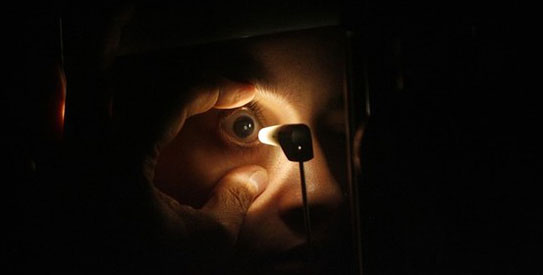
Cataracts don’t form on your eyes
Sounds hard to believe right? “That’s the most frequent misunderstanding I encounter,” says Stephen Foster, a clinical professor of ophthalmology at Harvard Medical School and founder of Massachusetts Eye Research & Surgery Institution. By definition, a cataract is a clouding of the eye’s lens. Most of us assume that a foggy coating has developed on top of the lens, but a cataract actually forms inside the eye. The vision-distorting haze occurs when proteins that comprise the normally crystal-clear lens break down. “You can’t feel a cataract, and it could take months or years to progress to a stage where you require surgery to remove it,” he says.
Getting older isn’t the only risk factor
Okay, it’s a fact that most cataracts are age-related, but it’s possible to develop them thanks to an eye injury or following surgery for another eye issue, such as glaucoma. Surprisingly, radiation and sun exposure also put you at an increases risk and bright sunlight may speed up the breakdown of those lens proteins. Meanwhile, some cataracts are congenital and babies are occasionally born with them. Who knew!
Cataracts can affect just one eye
While bilateral cataracts are more common, it’s possible for a cataract to develop in just one of your eyes, Foster reveals. “Especially if you’ve suffered some kind of blow or trauma to one of your eyes, that may result in a cataract developing in one eye but not the other,” he explains. If you happen to notice even slight discolouration in one of your eyes, post an accident, or otherwise, book an appointment with your eye-specialist immediately.
It can distort vision in different ways
“I’ve had cataract patients with 20-20 vision,” Foster says. Some people end up with eyesight that’s constantly blurry, but others only have trouble under certain conditions. “I just saw a patient who complained about difficulty seeing when driving at night,” he explains. “His vision was perfect most of the time, but he had a particular type of cataract that causes light scatter.” Having said that, cataracts are not limited to one type, so be wary if your vision seems cloudier lately.
Not everyone with a cataract requires surgery
That may be a relief to countless of us out there! When your cataract first starts to form, your vision isn’t affected much, Foster explains. “Many people put off surgery for years,” he says. And no, there aren’t really any risks associated with this procedure procrastination. “I always say that if a cataract affects your quality of life, then we need to make plans to take it out,” he says. “Otherwise, we can forget about it until your next appointment.”
Cataract surgery is super common — and super safe
If you’ve reached the point where you need to go under the knife, don’t you dare panic! Cataract surgery has a 96 per cent success rate, making it one of the safest procedures in modern medicine, Foster confirms. “It involves local anaesthetic, a small incision and no stitches,” he says. Your eye surgeon will remove your lens, clean out any accumulated gunk, and insert a new lens implant. “It only takes about 15 minutes,” Foster shares. After the procedure, you’ll have to wear a protective shield when you sleep or nap, and you won’t be able to jog for a couple weeks — that’s really about it. But your vision may be clearer as soon as the day after surgery, and within a month you’ll be fully recovered and seeing better than ever — you’ll in fact, thank your stars for getting the procedure done!
You can’t stop the clock, but you can reduce the risk
Wearing UV-blocking sunglasses every time you’re out in the sun or driving in the daytime can make a huge deal in shielding your eyes. Also, loading up on antioxidant-rich fruits and veggies have proven to be great aids in protecting your eyes from cataracts, as well as a bunch of other eye issues. Quitting smoking and consuming a low glycaemic diet can also lower your chances of developing cataracts earlier in life.
Published in The Express Tribune, March 28th, 2016.
Like Life & Style on Facebook, follow @ETLifeandStyle on Twitter for the latest in fashion, gossip and entertainment.


































COMMENTS
Comments are moderated and generally will be posted if they are on-topic and not abusive.
For more information, please see our Comments FAQ